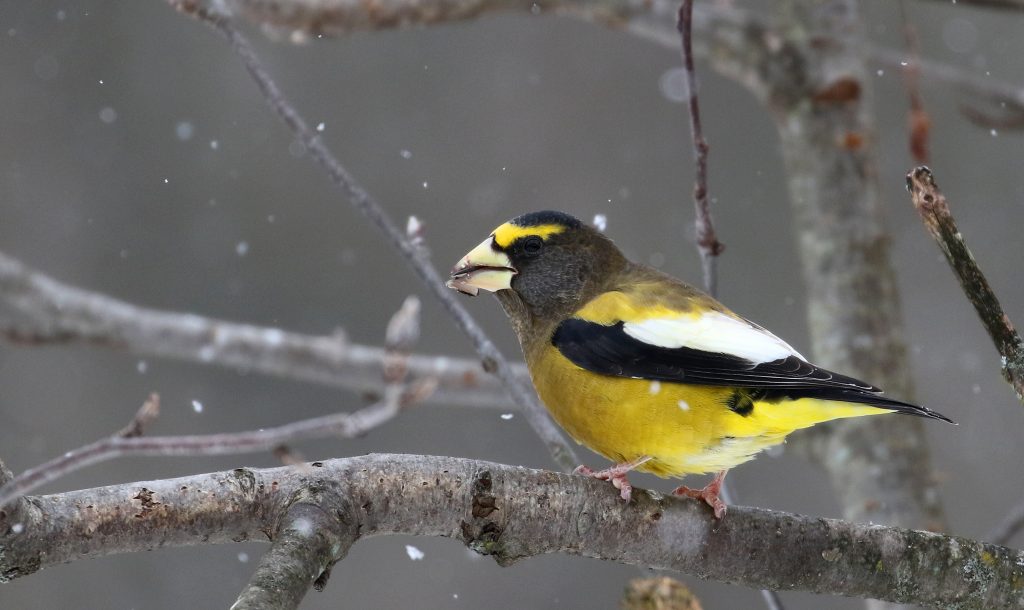
Tracking Irruptive Movements of Wintering Evening Grosbeaks (Coccothraustes vespertinus) from Western Pennsylvania
David Yeany II, Avian Ecologist, Pennsylvania Natural Heritage Program, Western Pennsylvania Conservancy, dyeany@paconserve.org
Lucas DeGroote, Avian Research Coordinator, Powdermill Nature Reserve, Carnegie Museum of Natural History, DegrooteL@CarnegieMNH.org
Since 2008, winter populations of evening grosbeak have consistently occurred in Forest County, Pennsylvania, in the heart of the Allegheny National Forest (ANF) at a site in the town of Marienville. The Pennsylvania Natural Heritage Program has documented these birds at this site during 6 of the last 13 years (annual irruption seasons Oct-May) with 100 or more individuals recorded during the winter of 2012-2013. While regional winter occurrences have been more sporadic and continental populations have declined by 92% since 1970 according to Partners in Flight, evening grosbeaks keep returning to the ANF during winter. This raises a number of questions: 1) why do evening grosbeaks keep returning to this area? 2) do they have true site fidelity? 3) where do these irruptive populations return to nest? 4) how far and wide do they roam throughout the regional landscape during winter? 5) what can we learn about the timing of their movements?

PNHP and CMNH are still obtaining and processing Motus data for these birds, and we are looking to continue our project with a predicted evening grosbeak irruption during the winter of 2020-2021. We hope to be able to deploy more transmitters on birds irrupting south into western Pennsylvania and will look for opportunities to track birds in other locations as well.
Evening grosbeaks from this study should still have color-bands and PNHP and CMNH request any sightings of these birds to be sent to dyeany@paconserve.org.
This project was highlighted under work of the Allegheny Bird Conservation Alliance in the Pennsylvania Natural Heritage Program’s first ever Annual Report in 2018:
http://www.naturalheritage.state.pa.us/docs/PNHP-2018-AnnualReport.pdf

Western PA Conservancy: https://waterlandlife.org/
PA Natural Heritage Program: http://www.naturalheritage.state.pa.us/
Powdermill Avian Research Center: https://powdermillarc.org/
Carnegie Museum of Natural History: https://carnegiemnh.org/
